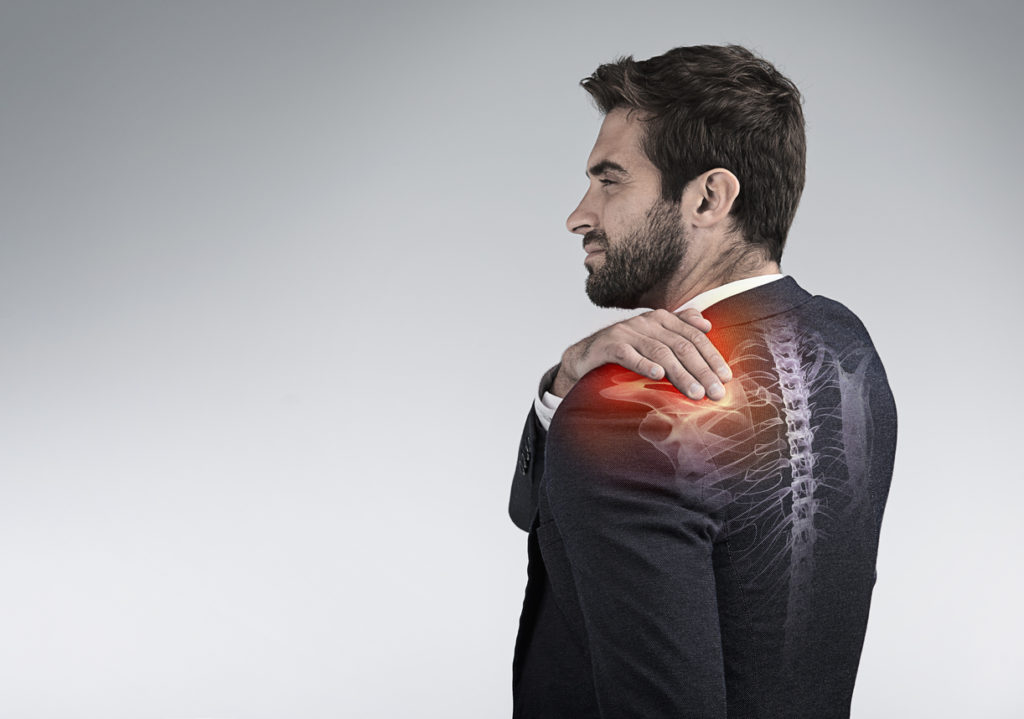The shoulder is the most flexible joint in the body. Because it can move in so many directions, it can lead to an increased tendency for instability of the joint called shoulder instability. This happens when the head of the upper arm bone is forced out of the shoulder socket.
Once you’ve had a shoulder dislocation, you’re vulnerable to repeated dislocations due to injury to the shoulder’s soft tissue and bony supports. When these dislocations are repeated it is called chronic shoulder instability.
Read on to learn more about the causes of shoulder instability and how to rehabilitate an unstable shoulder.
Shoulder anatomy
To best understand shoulder instability, it’s helpful to know about the different parts of the shoulder and how they’re connected.
The shoulder is made up of three bones:
- Upper arm bone
- Shoulder blade
- Collarbone
The shoulder is a ball-and-socket joint, which means the ball of the upper arm fits into a shallow socket in your shoulder blade. The ball stays in the shoulder socket with the help of static restraints (labrum and ligaments) and dynamic restraints (the rotator cuff and scapular muscles).
The rotator cuff is made up of four muscles that come together as tendons to form a covering around the head of the humerus. The rotator cuff attaches the humerus to the shoulder blade and helps to lift and rotate your arm.
The glenoid is the socket that the humerus fits in. This socket is surrounded by a fibrocartilaginous structure called the labrum that helps the head of the upper arm fit into the shoulder socket. Where the head of the humerus fits into the scapula is called the glenohumeral joint.
Shoulder dislocations can be partial, with the ball of the upper arm only partially coming out of the socket, referred to as a subluxation. However, a complete dislocation means the ball entirely leaves the socket.
Repeated dislocations cause the ligaments, tendons and muscles around the shoulder to become loose or torn. Chronic shoulder instability is the failure of these tissues to keep the arm centered in the shoulder socket.
What causes shoulder instability?
There are a few different potential causes of shoulder instability. These causes include:
Shoulder dislocation
Shoulder dislocation due to severe injury or trauma is the most common cause of recurrent instability of the shoulder joint.
Repetitive overhead strain on the shoulder joint
Repetitive overhead strain from sports such as swimming, tennis or volleyball can also result in feelings of shoulder instability. However, the injury to the soft tissues is different then what is seen in athletes who have acute shoulder dislocations. This is often seen in people who also have hypermobile joints.
Hypermobile shoulder joint
A patient may have naturally loose ligaments throughout the body. This condition can cause a hypermobile joint (sometimes referred to as being double-jointed) with multidirectional shoulder instability.
What are the symptoms of shoulder instability?
While symptoms can vary or be similar to those of other shoulder conditions, there are a few common symptoms associated with shoulder instability, including:
- Shoulder pain
- Repeated shoulder dislocations
- A sensation of your shoulder “giving out”
- A feeling of your shoulder being loose or slipping in and out
How is shoulder instability diagnosed?
To determine if you have shoulder instability, your physician will ask you for a complete medical history. They will also ask you to describe your symptoms and conduct a physical examination.
Shoulder specialists also sometimes have patients get X-rays or MRIs to confirm their patients’ shoulder pain causes.
Make an appointment with a shoulder specialist
How is shoulder instability treated?
Initial treatment for shoulder instability is non-surgical and includes:
- Rest from your usual activities
- Strengthening exercises and physical therapy
- Non-steroidal anti-inflammatory medicine such as ibuprofen
Surgery may be necessary if your sore shoulder causes disability and shoulder instability is not relieved with nonsurgical methods. Surgery helps to repair the ligaments so that they can hold the shoulder joint in place.
Surgery options include:
Minimally invasive arthroscopy
A physician will use tiny incisions, a camera and instruments to repair the soft tissues in the shoulder. This procedure is often referred to as a labral repair or Bankart repair.
Open surgery
A physician will make a larger incision over the shoulder to repair the damaged tissues.
Learn more about OrthoIndy shoulder treatments
Rehabilitation
After surgery, the patient’s shoulder is placed in a sling to limit it from moving. Physical therapy will be necessary to strengthen the shoulder joint and get the range of motion back.
The dynamic stabilizers are very important, and strengthening focuses on the rotator cuff and scapular stabilizers to help reduce shoulder instability.
Return to contact and overhead athletics is typically six to eight months after surgery to prevent recurrent dislocation or shoulder tendon injury.
Find out what’s really causing your shoulder pain
If your shoulder pain causes you to miss out on normal day-to-day activities, we can help. Request an appointment online or call OrthoIndy at 317.802.2000 to book an appointment with one of our shoulder specialists.
If your shoulder injury or condition is recent, you can walk right into one of our OrthoIndy Urgent Care locations for immediate care. For rehabilitation and physical therapy, no referral is needed to see one of our physical therapists.





